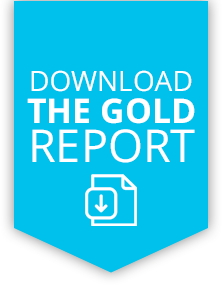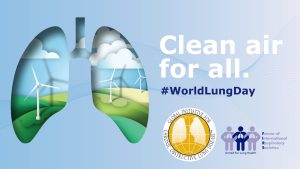World Lung Day 2024: International Respiratory Societies Call for Urgent Action on Air Pollution
World Health Organization notes 99 percent of the population breathes unhealthy air.
25 Sept. 2024. Seven million deaths annually are attributed to air pollution-related illnesses like COPD, lung cancer and respiratory infections. GOLD calls on global leaders to intensify efforts to combat air pollution, a leading cause of lung disease and death worldwide.
World Lung Day (Wednesday, 25 September) is organized by the Forum of International Respiratory Societies (FIRS), of which GOLD is a founding member. This year’s theme, “Clean Air and Healthy Lungs for All,” highlights the critical link between air quality and lung health.
Toxic air is a universal threat, impacting everyone from infants to older people. Exposure can shorten lives, damage lungs, exacerbate asthma, and lead to chronic respiratory diseases.
An alarming 99 percent of the global population breathes air exceeding World Health Organization guideline limits, with low- and middle-income countries disproportionately affected.
M. Patricia Rivera MD, president of FIRS and immediate past-president of the American Thoracic Society, emphasizes the profound impact of climate change on public health: “Rising air pollution and ground-level ozone, linked to greenhouse gas emissions, are diminishing lung function, increasing hospitalizations for respiratory diseases, and elevating the risk of lung cancer. We must intensify efforts to reduce greenhouse gas emissions to combat the health risks and mortality linked to air pollution worldwide.”
Climate change is a major driver of air pollution. As the earth warms, weather patterns become disrupted leading to increased wildfires, dust storms and stagnant air masses that trap pollutants closer to the ground. This rise in air pollution is having an impact on lung health. Children, older adults, and people with existing respiratory conditions are especially vulnerable to its effects. Climate change is also linked to the spread of infectious diseases, such as pneumonia, which can further compromise lung health.
FIRS calls on governments and healthcare providers worldwide to prioritize reducing greenhouse gas emissions. This critical step will improve air quality, protect lung health, and save lives.
Join the Conversation
- FIRS World Lung Day Webinar: 1:00 PM CEST, Sept. 25, 2024, chaired by the President of the Forum of International Respiratory Societies M. Patricia Rivera, MD, ATSF. Engage with global experts on pressing issues affecting lung health, from climate change to the need for global standardization and advocacy. Register here.
- Triple Threat to Lung Health: Find key facts on air pollution, tobacco use, and climate change here.
- The Global Impact of Respiratory Disease report outlines major causes of respiratory disease and lays out recommendations for global action.
FIRS Media Contact Fiona Salter, Fiona.salter@firsnet.org
About the Forum of International Respiratory Societies
The Forum of International Respiratory Societies (FIRS) is a collaborative organization consisting of the world’s foremost international respiratory societies. Comprising over 70,000 members globally, FIRS is dedicated to advancing lung health on a global scale.
FIRS comprises: the American College of Chest Physicians (CHEST), American Thoracic Society (ATS), the Asian Pacific Society of Respirology (APSR), Asociación Latino Americana De Tórax (ALAT), European Respiratory Society (ERS), International Union Against Tuberculosis and Lung Diseases (The Union), Pan African Thoracic Society (PATS), the Global Initiative for Asthma (GINA), and the Global Initiative for Chronic Obstructive Lung Disease (GOLD).


